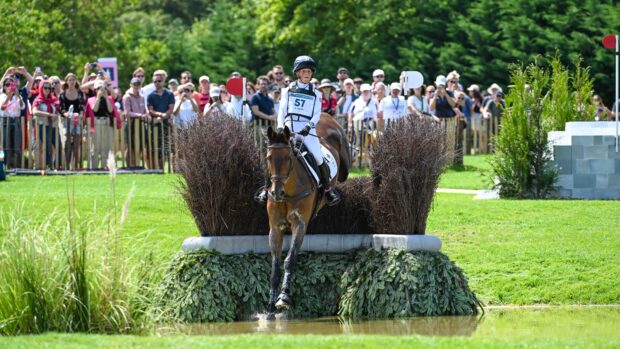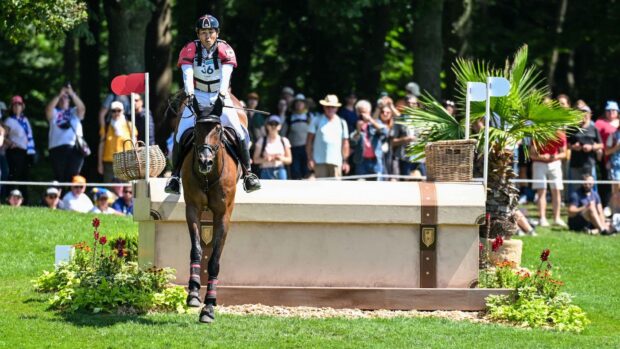A horse who suffered such severe nerve damage in an electrical storm that euthanasia was being considered is back in work after ten weeks of therapy.
Pride, a 16.2hh Irish sports horse, was injured in a fall during the storm, in July 2017.
But after an assessment by a vet from House & Jackson, the mare was approved for treatment at Writtle University College.
Equine students Emily Barker, 21 from Cornwall, Emily Hughes, 20 from London, Rosemary Lawrence and Charlotte Hall both 20 and from Kent, designed the rehabilitation programme as part of their module on equine massage and remedial exercise.
“The programme began with simple controlled exercise in walk and trot with regular episodes where we requested Pride to back up a few paces. This targeted and challenged her proprioceptive skills in order to develop and strengthen them,” said Emily Barker.
Pride’s treatment was enhanced with the use of a small incline on the entrance to her stable and varied surfaces.
“We gradually moved on to incorporate poles. To begin with, this was just one or two in a straight line but Pride showed great improvement so this could be quite quickly increased,” said Emily Hughes.
More complex pole work followed to strengthen her hoof-eye coordination and provide mental stimulation.
“We also included destabilisation exercises to ask Pride to counteract a pressure applied in a certain direction in order to remain stabilised. This was particularly good as Pride did exhibit unequal muscle development,” said Charlotte.
Massage and myofascial release were also used to highlight areas of sensitivity and tension within the mare’s body.
“We mainly focused on one area at a time, with the aim of alleviating tension or discomfort,” said Rosemary.
Lunging was also used to assess the horse’s stronger side and make her more symmetrical in all gaits.
Continues below…

Shoulder lameness: direct trauma injuries
The most common cause of shoulder lameness in adult horses is a traumatic accident — a fall or a collision,

Emaciated mare makes ‘miraculous’ recovery
A neglected mare who was so weak that she needed a sling to help her stand is recovering after being
After ten weeks of work, the vet found Pride had musculature and dynamic stability. She returned to her owner in May and is now being ridden again.
“We saw a great change in Pride neurologically, physiologically and psychologically and she was seen to gain so much confidence. The vet’s evaluation post-programme left her pleasantly surprised, which was excellent news,” added Emily Barker.
For all the latest news analysis, competition reports, interviews, features and much more, don’t miss Horse & Hound magazine, on sale every Thursday.




